Jambi
Jambi
Sepucuk Jambi Sembilan Lurah - One Jambi indigenous territory, formed by nine river settlements
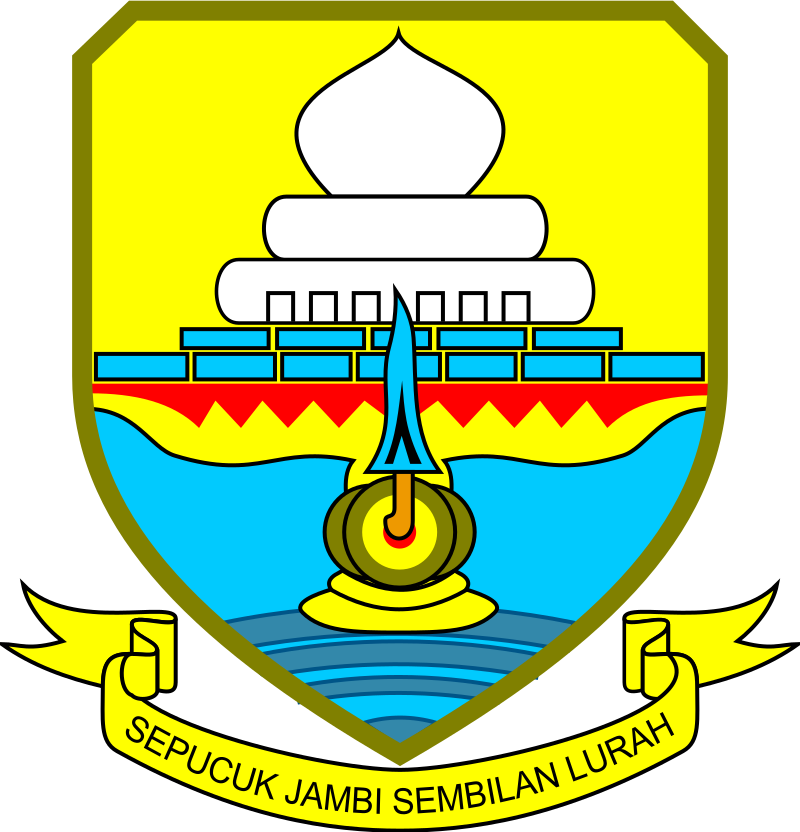 Jambi is a province of Indonesia. It is located on the east coast of central Sumatra and spans to the Barisan Mountains in the west. Its capital and largest city is Jambi.
The province has a land area of 50,160.05 km2, and a sea area of 3,274.95 km2. It had a population of 3,092,265 according to the 2010 census and 3,548,228 according to the 2020 census. The official estimate as at mid 2021 was 3,585,119.
According to the Hikayat Negeri Jambi text, the word Jambi comes from the order of a king named Tun Telanai, to dig a canal from the royal capital to the sea, and this task must be completed within an hour. The word clock is what later became the origin of the word Jambi.
Jambi is a province of Indonesia. It is located on the east coast of central Sumatra and spans to the Barisan Mountains in the west. Its capital and largest city is Jambi.
The province has a land area of 50,160.05 km2, and a sea area of 3,274.95 km2. It had a population of 3,092,265 according to the 2010 census and 3,548,228 according to the 2020 census. The official estimate as at mid 2021 was 3,585,119.
According to the Hikayat Negeri Jambi text, the word Jambi comes from the order of a king named Tun Telanai, to dig a canal from the royal capital to the sea, and this task must be completed within an hour. The word clock is what later became the origin of the word Jambi.
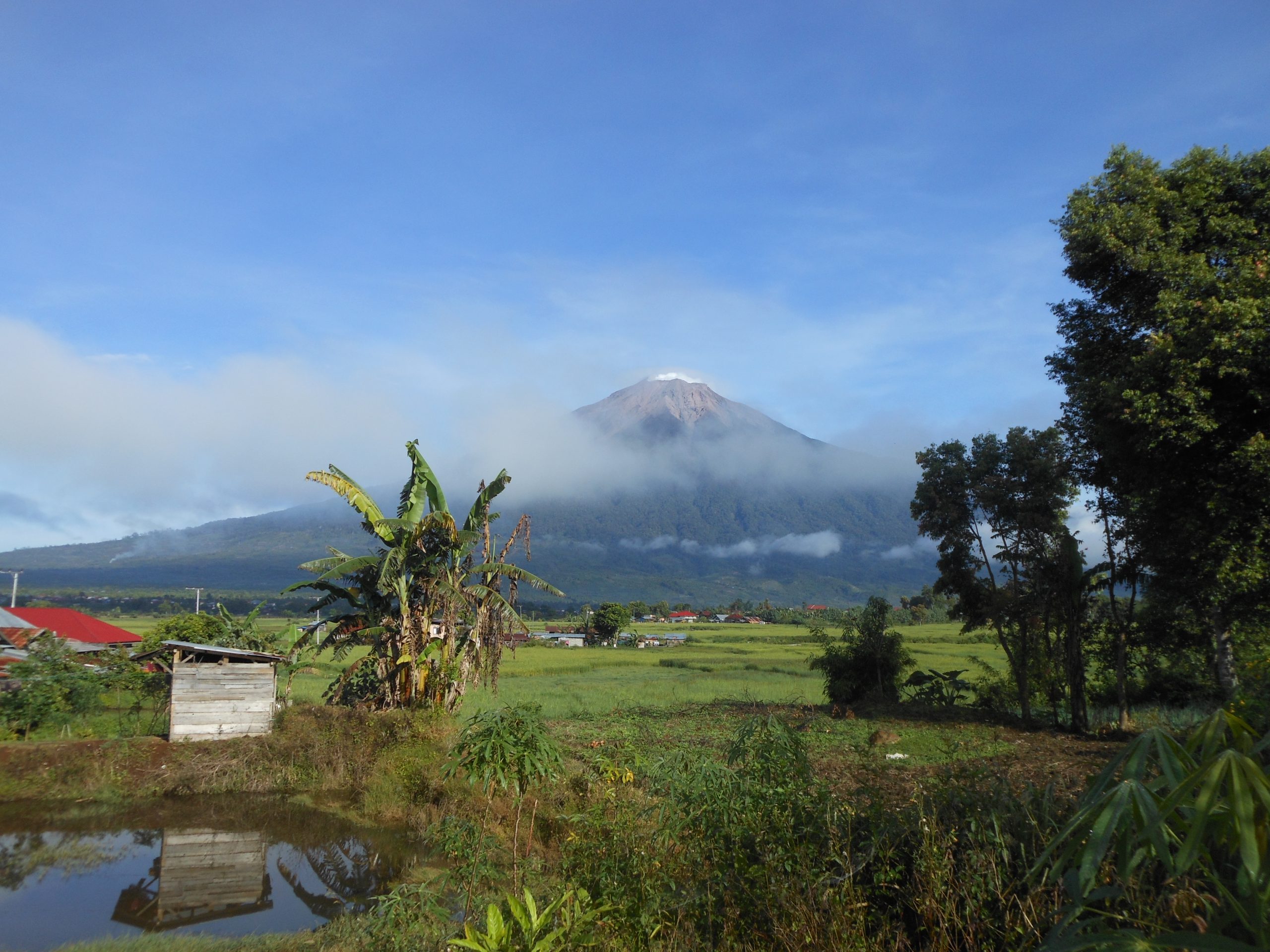 Geography
Geography
Jambi Province is geographically located between 0.45° North Latitude, 2.45° South Latitude and between 101.10°-104.55° East Longitude. To the north it is bordered by Riau Province, to the east by the Berhala Strait, to the south by the Province of South Sumatra and to the west by the Provinces of West Sumatra and Bengkulu Province.
The geographical condition is quite strategic among other cities in the surrounding provinces, making the role of this province quite important, especially with the support of abundant natural resources. The needs of industry and society in surrounding cities are supported by the supply of raw materials and necessities from this province.
 Demography
Demography
The area of Jambi Province is 50,160.05 km² with a population of Jambi Province in 2017 amounting to 3,515,017 people with a density of 70.08 people/km². Previously in 2010, this province had a population of 3,088,618 people (BPS data from the 2010 census). The population of Jambi Province in 2006 was 2,683,289 people (SUPAS data projection from BPS Jambi Province. The population of Jambi Province in 2005 was 2,657,536 (SUSENAS data) or with a density level of 50.22 people/km2.
As many as 46.88% of the total workforce in Jambi Province work in the agricultural, plantation and fishery sectors; 21.58% in the trade sector and 12.58% in the service sector. With employment conditions, most of the people in this province are highly dependent on agricultural products, plantations, so that the efforts of the regional and central governments to improve the welfare of the community are through the development of the agricultural sector.
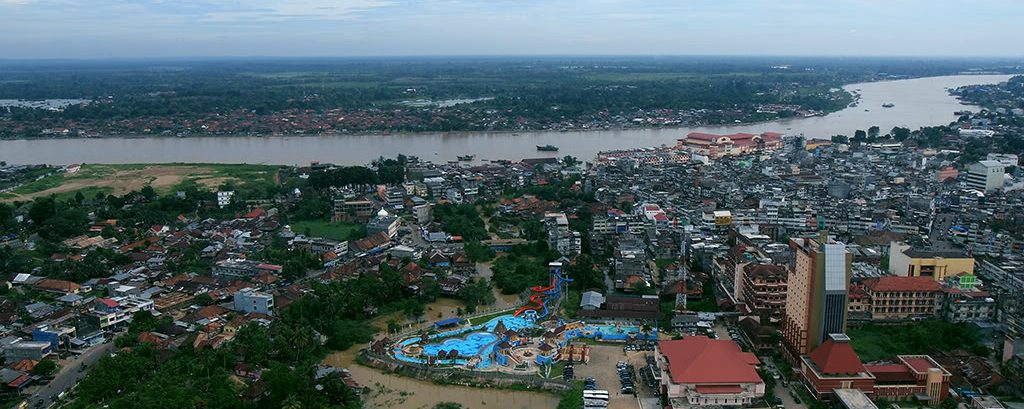 Most of the people of Jambi embraced Islam, which was 95.08%, while the rest were Christians 3.87% where Protestant 3.29% and Catholic 0.58%. Others are Buddhists, namely 0.97%, Confucianism 0.02% and a small proportion of Hindus 0.01%, which are generally located in Jambi City.
Most of the people of Jambi embraced Islam, which was 95.08%, while the rest were Christians 3.87% where Protestant 3.29% and Catholic 0.58%. Others are Buddhists, namely 0.97%, Confucianism 0.02% and a small proportion of Hindus 0.01%, which are generally located in Jambi City.
Jambi, it was a Buddhist Education Center in 7th century which turned into Moslem City in 17th century.
In Jambi Province, there are various languages spoken by the population, namely Indonesian, Malay (Jambi dialect), Bajau Tungkal Satu, Banjar, Bugis, Javanese, Kerinci, and Minangkabau.

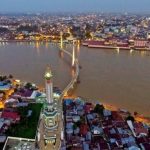

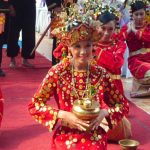
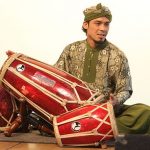
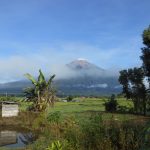


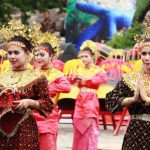
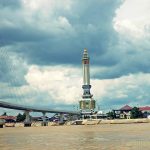












 Culture
Culture
Jambi is a province located in the east of the island of Sumatra. Jambi society consists of several kinds of indigenous tribes such as the Jambi Tribe, the Kerinci Tribe, the Batin Tribe, the Anak Dalam Tribe, to the Minang Tribe descendants. No wonder this province has a variety of traditions and cultures.
 Jambi’s music is heavily influenced by Malay and Arabic nuances, including traditional musical instruments, such as Gambus Jambi, Gendang Melayu, Sekdu, Kompangan, Marawis, Cangor and Kelintang Jolo.
Jambi’s music is heavily influenced by Malay and Arabic nuances, including traditional musical instruments, such as Gambus Jambi, Gendang Melayu, Sekdu, Kompangan, Marawis, Cangor and Kelintang Jolo.
As for the Jambi folk songs, including Injit-Injit Semut, Pinang Muda, Selendang Mayang, and Batanghari
Broadly speaking, the art of dance from Jambi province is from the ethnic culture of Malay and Kerinci. There are several types of traditional Jambi dances, including the Sekapur Sirih dance, Selampit Delapan, Inai, Rentak Kudo, Mengaup and Rentak Besapih dances.
 Tourism
Tourism
Jambi Province consists of 11 regencies/cities. Facilities and infrastructure in Jambi are currently quite well available. There are many ways that can be used to access various tourist attractions in Jambi City and other districts in Jambi province. Means of transportation that can be used to get to Jambi province by plane and car. In addition to the city of Jambi, districts that already have airports are Bungo and Kerinci districts.
There are quite a number of tourist objects in Jambi. One of them is Kerinci Regency which is a tourist area in Jambi province, which is known as a piece of land from heaven. Nature in Kerinci is very beautiful, ranging from mountains, lakes, tea plantations and much more. In addition to Kerinci, tourist attractions in Jambi are also found in several other regencies, including:
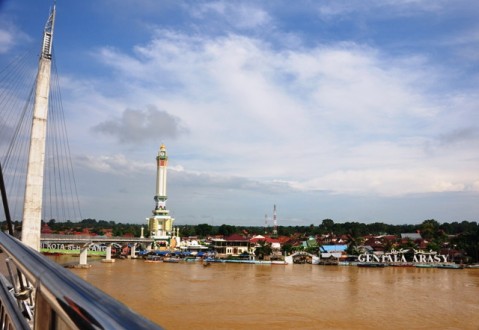 Gentala Arasy Tower and Pedestrian Bridge.
There are two objects at this location, namely the Gentala Arasy Tower and the Pedestrian Bridge or better known as the Gentala Arasy Bridge. Pedestrian Bridge is a pedestrian bridge with a winding shape and stretches over the Batanghari river. At the end of the bridge there is the Gentala Arasy Tower which is a museum about the history of the development of Islam in Jambi City. In addition to the museum, here is also a culinary center and there are also many boats provided if you want to go down the Batanghari river.
Gentala Arasy Tower and Pedestrian Bridge.
There are two objects at this location, namely the Gentala Arasy Tower and the Pedestrian Bridge or better known as the Gentala Arasy Bridge. Pedestrian Bridge is a pedestrian bridge with a winding shape and stretches over the Batanghari river. At the end of the bridge there is the Gentala Arasy Tower which is a museum about the history of the development of Islam in Jambi City. In addition to the museum, here is also a culinary center and there are also many boats provided if you want to go down the Batanghari river.
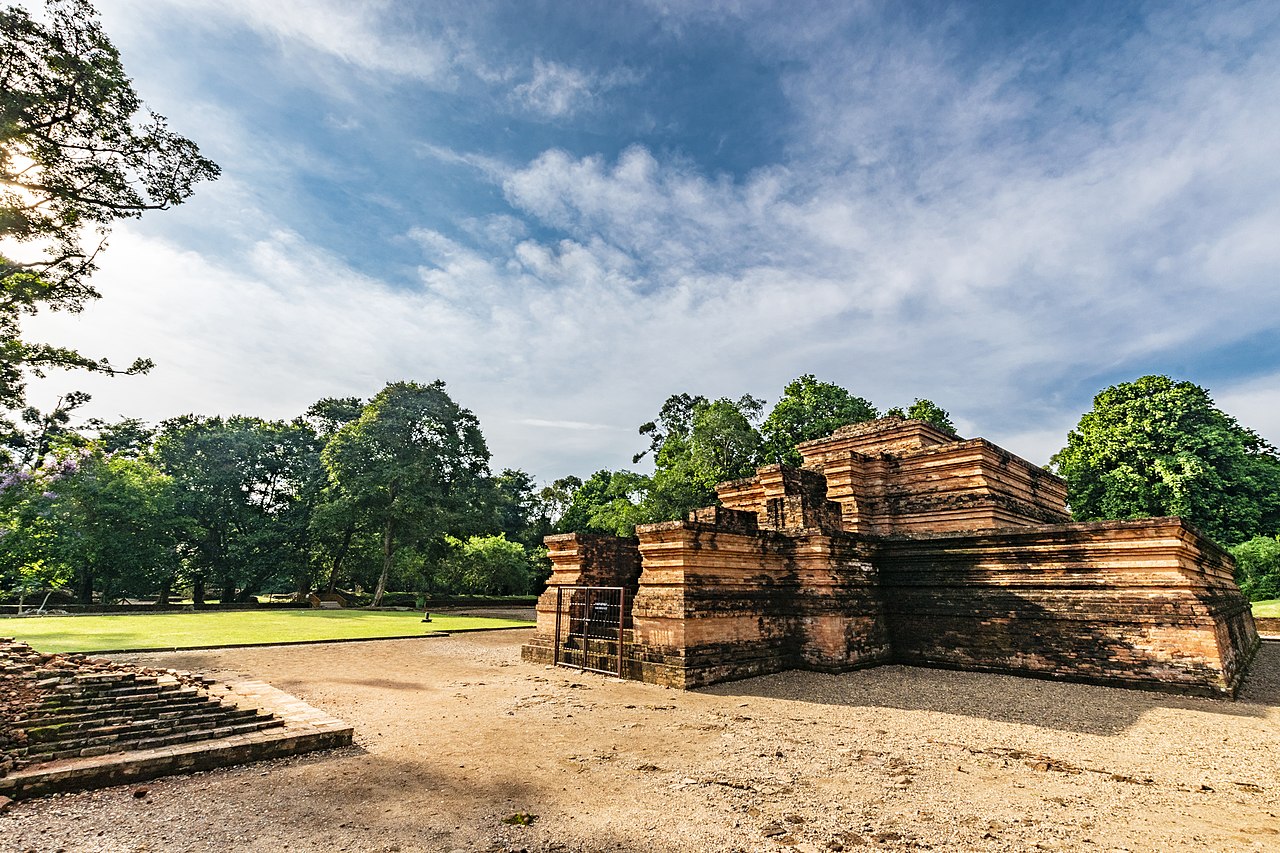 Muaro Jambi Temple is a Hindu-Buddhist temple complex located in Muaro Jambi district and is estimated to date from the 11th century AD. This temple complex is the largest in Indonesia, even Southeast Asia.
Muaro Jambi Temple is a Hindu-Buddhist temple complex located in Muaro Jambi district and is estimated to date from the 11th century AD. This temple complex is the largest in Indonesia, even Southeast Asia.
Sigerincing Waterfall, has a height of approximately 40-60 meters, located in Merangin district. This waterfall is part of the Batang Tembesi river which originates at Mount Masurai.
Geopark Merangin, is one of the tourist attractions in Merangin district. This geopark not only offers white water rafting, but the uniqueness of the 350 million year old flora fossil is also the main attraction. This area is still covered with dense forest with various types of plants. To reach this location it takes about 6 hours by car from Jambi city, the provincial capital of Jambi province.
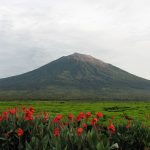
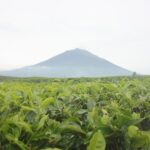
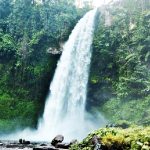
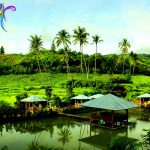
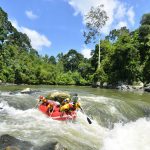
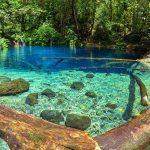
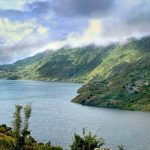
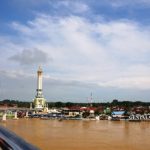















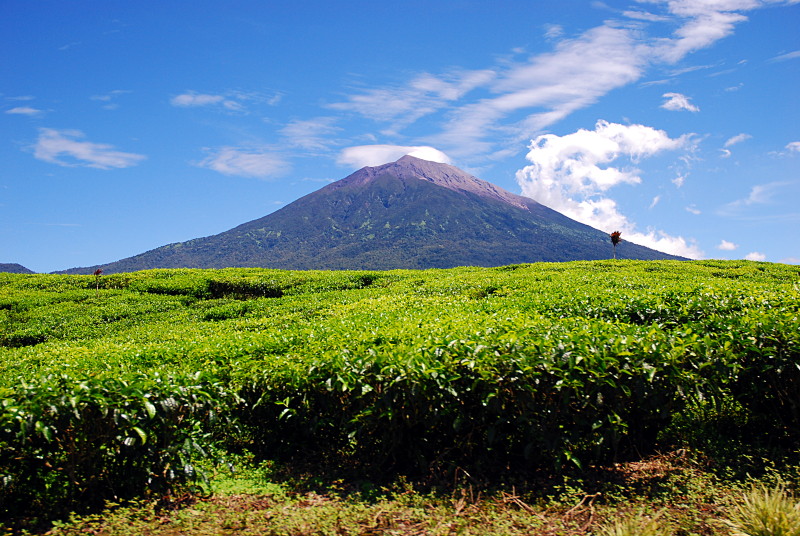 Kayu Aro Tea Plantation. One of the best and famous tourist attractions in Jambi since ancient times is the Kayu Aro Tea Garden located in Kerinci district. The plantation with an area of 3,020 hectares is a tea plantation in one of the largest expanses in the world with a backdrop of Mount Kerinci.
Kayu Aro Tea Plantation. One of the best and famous tourist attractions in Jambi since ancient times is the Kayu Aro Tea Garden located in Kerinci district. The plantation with an area of 3,020 hectares is a tea plantation in one of the largest expanses in the world with a backdrop of Mount Kerinci.
 Lake of Gunung Tujuh.
The natural conditions around Lake of Gunung Tujuh are very beautiful and natural and have very clear water. The beauty of the lake is complemented by a stretch of mountains (Gunung Tujuh) that surround it. At some point on the edge of the lake stretches of sand that resembles a beach. Seven Mountain Lake is located in Kerinci district.
Lake of Gunung Tujuh.
The natural conditions around Lake of Gunung Tujuh are very beautiful and natural and have very clear water. The beauty of the lake is complemented by a stretch of mountains (Gunung Tujuh) that surround it. At some point on the edge of the lake stretches of sand that resembles a beach. Seven Mountain Lake is located in Kerinci district.
Lake Kaco. This lake has an area of about 30 x 30 meters. The clear water in this lake makes the bottom clearly visible, even though it has an immeasurable depth of water. In addition, at night, Lake Kaco emits a bright light, especially at the time of the full moon.
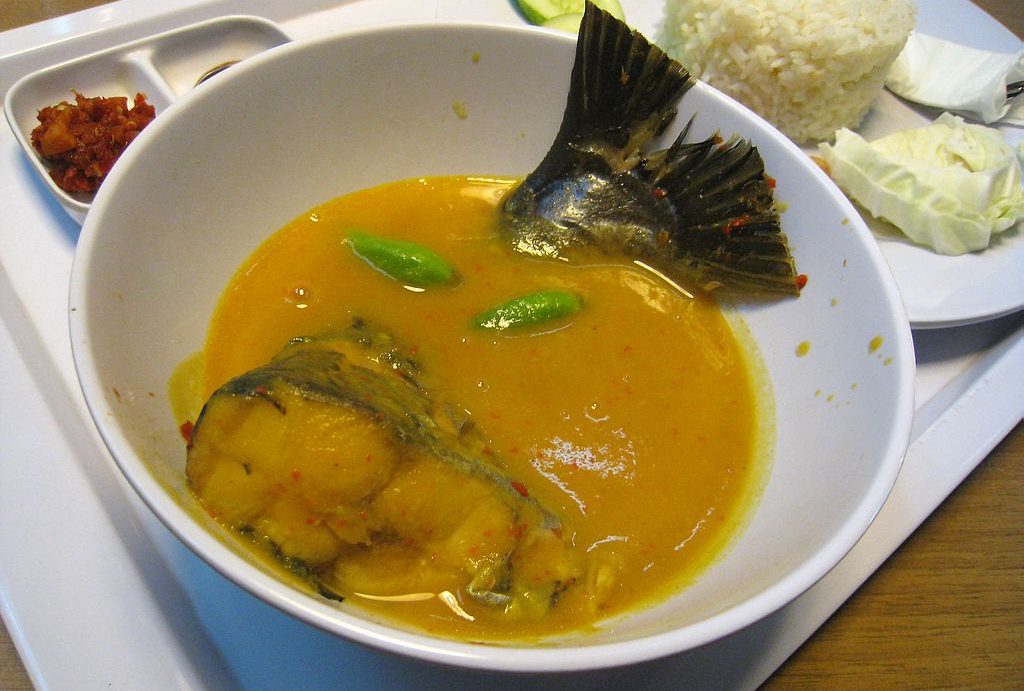 Cuisine
Cuisine
Jambi cuisine or Jambi cuisine is a typical Jambi food or culinary type that developed in the province of Jambi, Indonesia. This dish is mostly made from fish which is supported by the many rivers in Jambi province.
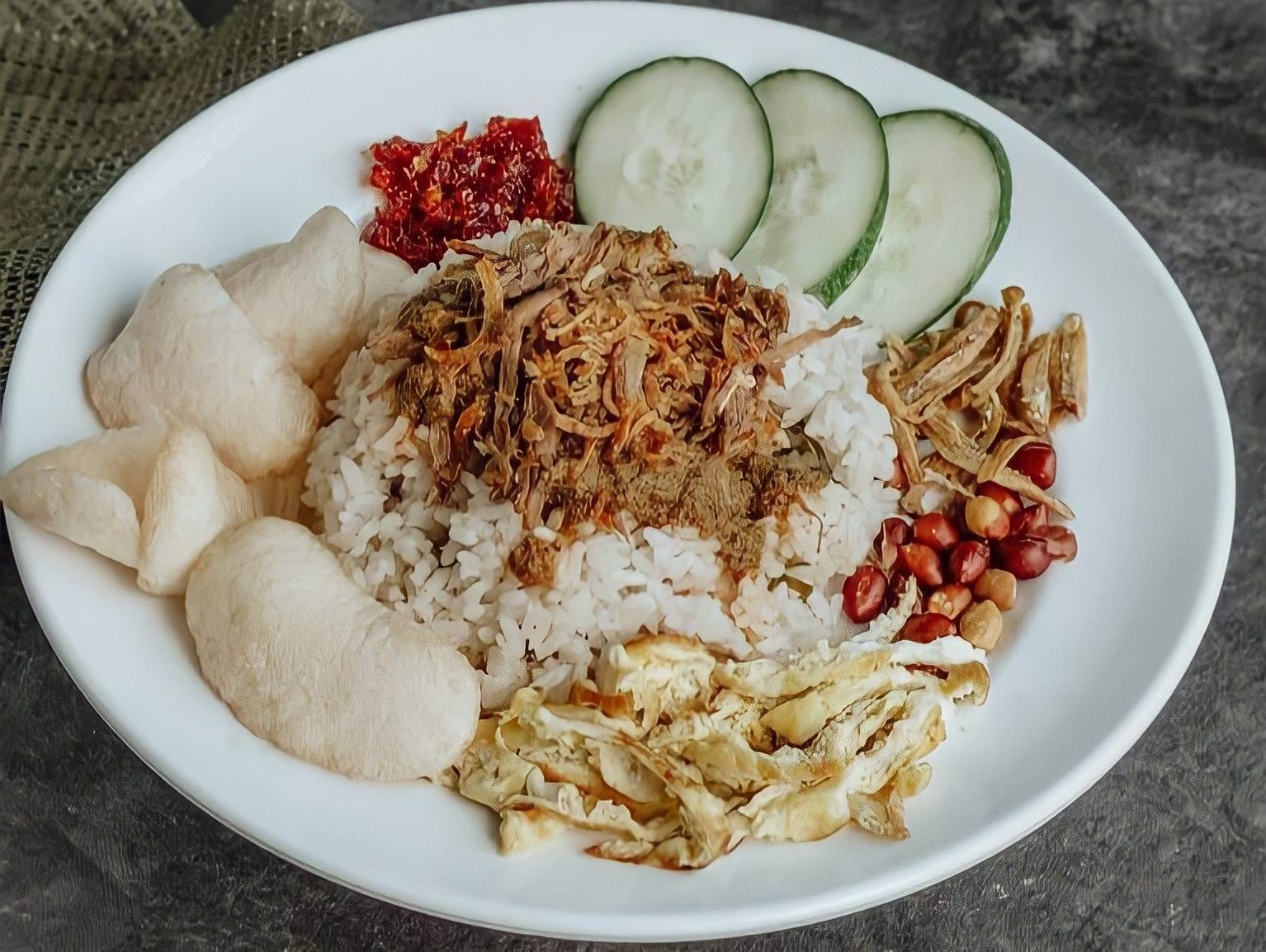 Spices are also generally not much different from West Sumatran cuisine. Malay and Minangkabau culture also influences the culinary mix of Jambi province.
Spices are also generally not much different from West Sumatran cuisine. Malay and Minangkabau culture also influences the culinary mix of Jambi province.
Some examples of foods from Jambi that are quite popular are Nasi Lemak, Tempoyak, Fish Kerutup, Black cooked meat, Gulai tepek fish, Gulai terjun, and Gulai tekuyung.
Each region in Jambi province, has food as a regional characteristic, which is usually used as souvenirs, for example: Jambi city is famous for its Padamaran Cake and AAA Coffee, while Kerinci with Potato Dodol and Kayu Aro Tea, then Merangin with Gelamai perentak and Kopi Jangkat, then Batanghari with Cepak Kapung cake, and Muaro Jambi is famous for its Pempek sambal and Pineapple Tangkit.
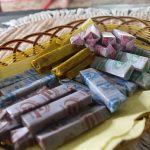
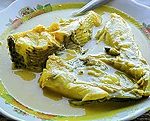
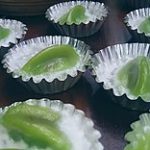

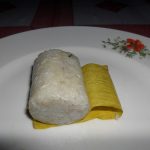
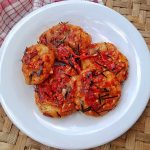
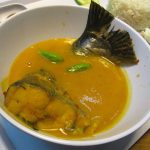
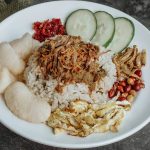
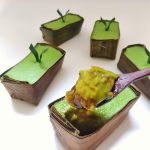

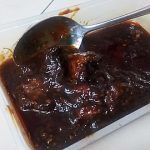
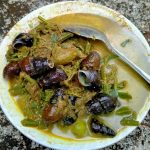












Kabupaten & Kota
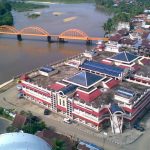
Sarolangun
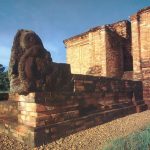
Muaro Jambi
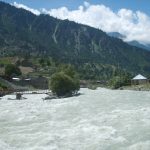
Merangin
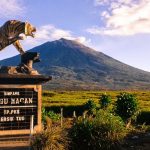
Kerinci

Bungo
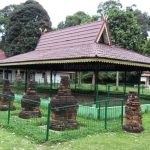
Batanghari
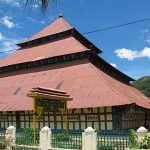
Sungai Penuh
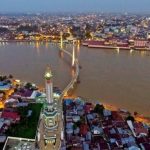
Jambi
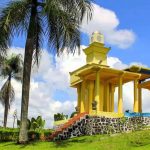
Tebo
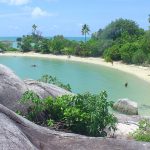
Tanjung Jabung Timur
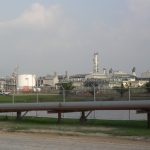
Tanjung Jabung Barat

Sarolangun

Muaro Jambi

Merangin

Kerinci

Bungo

Batanghari

Sungai Penuh

Jambi

Tebo

Tanjung Jabung Timur

Tanjung Jabung Barat

Sarolangun
